Through the Eyes of the Explorers

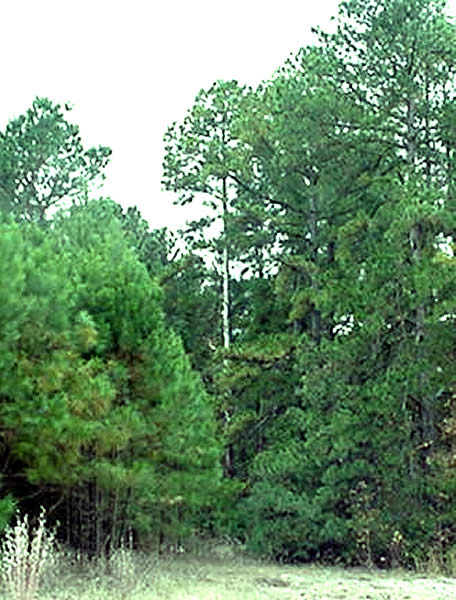
Early Spanish and French explorers, soldiers, and missionaries traveling through East Texas visited many Caddo villages with dome-shaped houses. Fortunately for us today, they described what they saw in their travel journals or diaries. One of the best accounts comes from the diary of a young Frenchman, Henri Joutel, one of the survivors of the failed Texas colony of the famous French explorer, La Salle. In the spring of 1687, Henri stayed in several Caddo villages and wrote that the houses looked "like large haystacks…except they are higher. They are covered with grass from the ground to the top." Some of the larger houses were as tall as 40-50 feet high. (In the old days before machinery, when hay was gathered it was piled up into large dome-shaped stacks for drying—few of us living today have ever seen a haystack!)
Building a grass house required lots of hard and tedious work. But, according to the explorers, house building was a happy and exciting time in Caddo communities. It was a special event during which all the neighbors came together and shared the many tasks that had to be done.
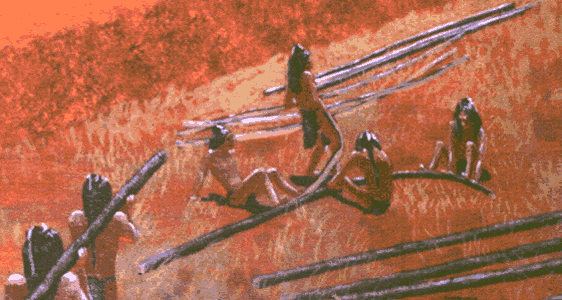
First, the village leader, or Caddi, chose the date for the event. Next he sent out his assistants (Tammas) to appoint members of the community to perform different tasks. If a man was given a small "token" stick, it meant he would have to cut down and trim a tall, limber tree to make a pole for the house framework. According to the Frenchman, Joutel, the poles were "as big around as a man's thigh"—small for a pine tree, but mighty heavy to drag around.
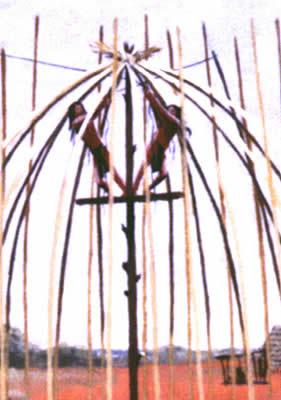
Other workers would cut young sapling trees that could be bent and woven across the poles, almost like weaving a basket. Meanwhile, women went to the nearest meadows to cut and gather bundles of tall grass that would be used to cover the structure. Other workers cut long strips of strong, flexible tree bark to use as thongs, or cord, to tie the poles together.
On the day before the house raising, the village priest, or medicine man, drew a huge circle on the ground to show where the house would be built. Around the circle, he marked the spots where deep, evenly spaced holes would be dug to hold the tall poles. The Tammas spent the night at the building place to get ready for the important day.
At sunrise on the chosen day, the house-raising began. Running to the circle carrying their poles, the village men stood them upright in their assigned holes. Several men climbed up a special forked or knobby pole set in the middle of the circle. The knobby pole was used as a ladder and work platform so the men could draw together the tips of the limber poles and tie them tightly together at the top. (This knobby pole was later cut down after the house was finished.)
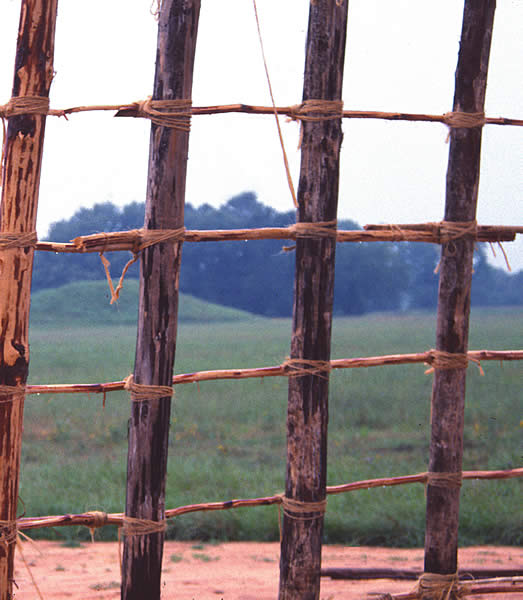
Next they used strips of strong but flexible tree bark (inner-bark, actually) to tie horizontal crossbars made of thin branches across all the poles. The branches and poles formed the framework or skeleton of the house.
When the framework was finished, the workers covered the whole house from bottom to top with bundles of grass called "thatch." The bundles were lashed tightly against each other on the crossbars. The rows of grass bundles overlapped like modern-day roofing shingles and helped keep water out.
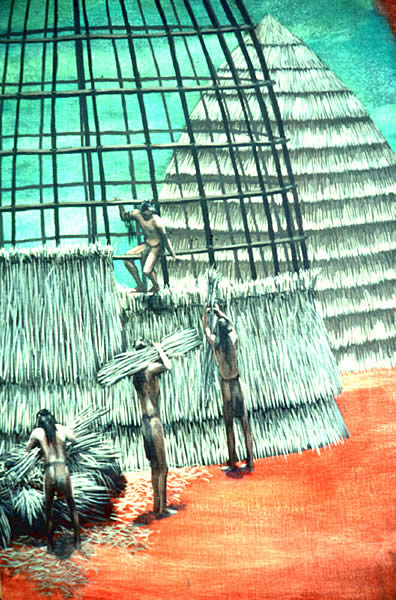
During the construction the Tammas made sure everybody worked hard and did a good job. They carried switches, which they used on slow or careless workers. This insured that the work was done well and done quickly, and it was accepted by all (even the Tammas' close relatives) with good humor.
By midday, the house was finished (except for inside work) and was blessed by the priest. A special "hat" or animal-like figure made of grass was placed on the top of the house to mark the completion of the house and make it stand out from other houses in the village.
Now it was time for the villagers to celebrate and enjoy a feast of corn, pumpkin, beans, sunflower seeds, walnuts, and venison (deer meat) prepared by the families who were to live in the new house. When the feast was over, the villagers returned to their own homes and their normal day-to-day routines. It had been a productive day for all.
In the eyes of the French and Spanish explorers, the Caddo were different in many ways. But they shared similar values about home, family, leadership, and civic duties. These qualities inspired respect and made them seem (to the Spanish) more "civilized" than many of the other groups the explorers encountered on their travels.
